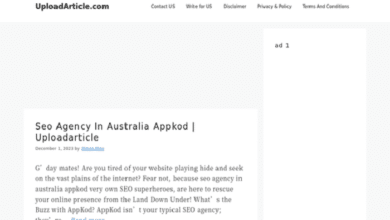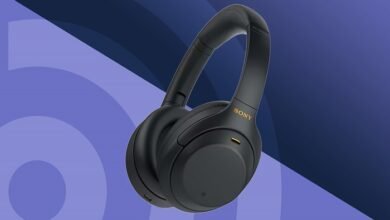“How Employee Monitoring Software Improves Accountability in Project Tracking”

Employee monitoring software plays a decisive role in enhancing accountability in project following by providing real-time intuitions into team activities and productivity. With geographies such as time tracking, task progress reports, and computerized alerts, managers gain a clear view of each member of staff’s contributions and time allocation on precise tasks. This transparency not only confirms that employees stay aligned with development timelines and deliverables but also fosters a value of responsibility, as team followers know their work is being tracked and assessed. In the end, this leads to better project conclusions, as teams developed more organized and focused, reducing suspensions and improving overall effectiveness.
Employee monitoring software incorporates a range of digital tools and applications planned to track and manage employee activities within a society. These solutions enable businesses to observe innumerable aspects of workplace comportment, including time management, task accomplishment, application usage, and online goings-on. Project tracking refers to the process of nursing the progress, performance, and status of a project in its lifecycle. It involves using various tools and procedures to ensure that project milestones are met, possessions are utilized efficiently, and the project stays in the interior budget and on the calendar.
In the context of modern productions, employee monitoring software plays a decisive role in bridging the gap between remote and in-office work atmospheres, ensuring that teams remain prolific and aligned with organizational goals. Out there mere oversight, these tools enhance yield by providing actionable insights into work patterns, identifying holdups, and facilitating better time sharing.
Key Features of Member of Staff Monitoring Software
Here are the Key Features of Member of staff Monitoring Software
- Time Chasin:
- Screen 24-hour care:
- Activity Cataloguing:
- Broadcasting and Analytics:
- Controls and Mouse Tracking:
- Geolocation Tracking:
- Alerts and Warnings:
- Integration Abilities:
- Employee Self-Monitoring Tools:
- Compliance and Refuge Features:
Benefits of Using Operative Monitoring Software
Here are some benefits of using operative monitoring software:
- Increased Yield:
- Enhanced Responsibility:
- Reduced Operative Costs:
- Improved Remote Toil Management:
- Better Resource Sharing:
- Enhanced Security and Agreement:
- Informed Managerial:
Compliance and Secrecy:
Employee monitoring computer software can be used ethically and in amenability with data protection laws by implementing transparent strategies and respecting employee privacy. Companies should inform workforces about what data will be collected, how it will be secondhand, and obtain their consensus where required. Limiting data collection to only as necessary for productivity and security resolutions helps align with privacy protocols like GDPR and CCPA.
Use Belongings:
Employee monitoring software is usually beneficial across various industries, pleasing to the eye productivity and refuge in both office and remote work settings. For illustration, in IT and tech companies managing inaccessible teams, monitoring tools allow administrators to oversee project progress and ensure lineup members stay on track, even across time zones.
In creative agencies, tracking time disbursed on different projects helps allocate resources proficiently and meet client deadlines, optimizing billable hours. Healthcare organizations use intensive care software to ensure compliance with data shield laws, tracking access to sensitive persevering information.
Choosing the Accurate Employee Monitoring Computer software
Choose the right computer software to see the following features:
- Scalability:
- Incorporations:
- Easiness:
- Data Refuge and Compliance:
- Detailed Broadcasting and Analytics:
- Customization and Elasticity:
- Customer Funding and Training:
Implementation:
Implementing member-of-staff monitoring software effectively requires careful scheduling and best practices to ensure a horizontal transition and foster a constructive work environment. One of the most critical aspects is a clear statement with employees; organizations should proactively inform their teams about the reasons for specialist care, what data will be collected, and just how it will be used to enhance productivity and sanctuary. This transparency helps lessen concerns and builds trust, as employees feel well-versed and respected.
Trends and Future View:
The landscape of employee monitoring software is speedily evolving, driven by current trends and emerging technologies that retort to the changing work environment. With the rise of remote and hybrid work copies, there is a growing emphasis on tools that smooth productivity without compromising employee secrecy. Technologies such as artificial aptitude and machine learning are increasingly being united into monitoring solutions, enabling more classy analytics and automated insights that help supervisors understand productivity decorations while minimizing intrusive monitoring.
Conclusion
In conclusion, operative monitoring software plays a pivotal role in pleasing the eye and accountability in project tracking, offering a suite of structures that promote productivity, transparency, and informed administration. By providing real-time insights into member activities, time management, and task development, these tools empower creations to foster a culture of responsibility while augmenting resource allocation.
The ethical operation of monitoring software not individual ensures compliance with data protection principles but also helps build trust between running and employees. As the workplace continues to advance with remote and hybrid models, the bearing of such software will only grow, lashing businesses toward greater efficiency and enhanced project products.





